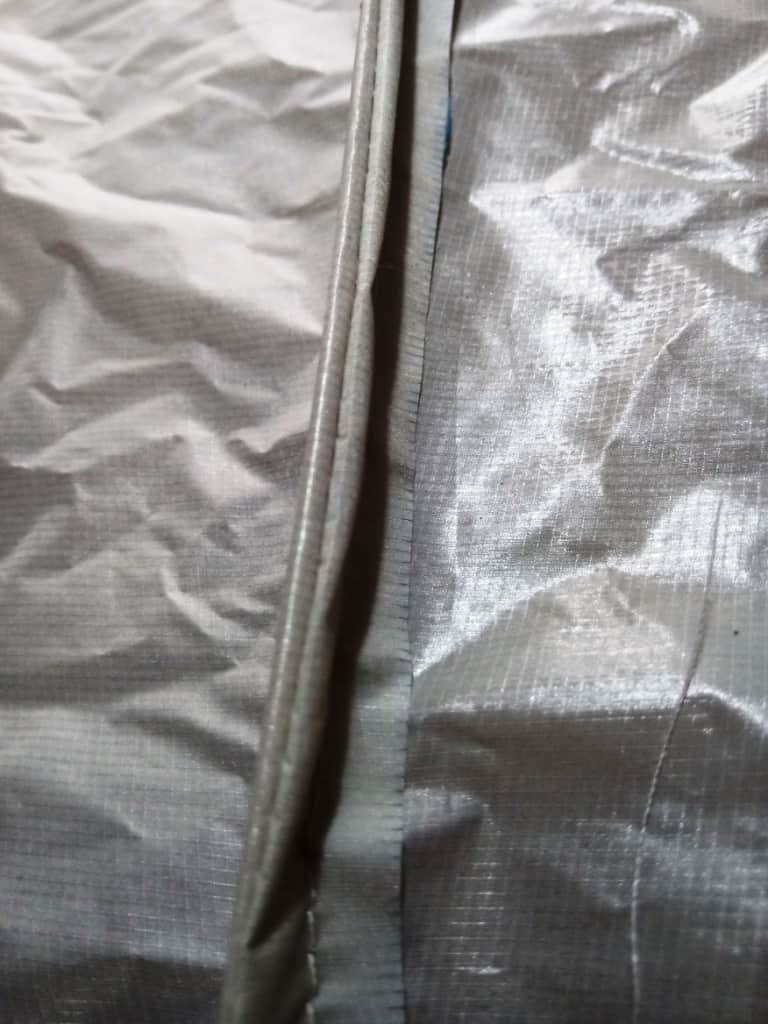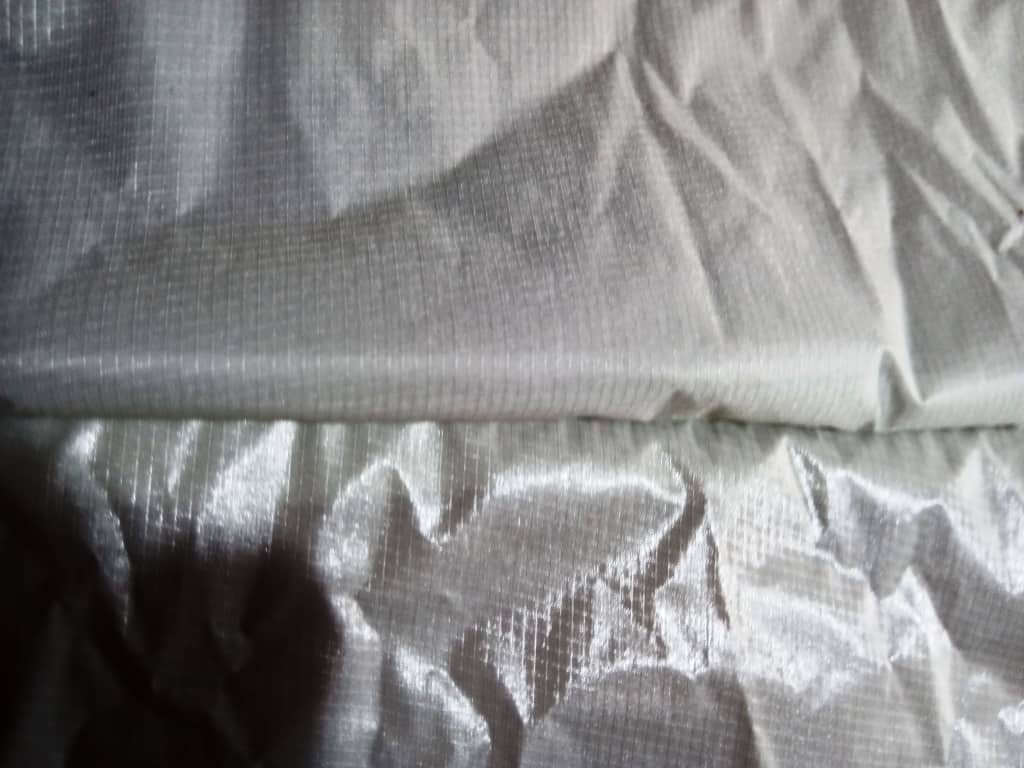If you are joining ultralight waterproof material such as Membrane Silpoly as I am just now to make a new version of my 7 x 7 Poncho Multi Tarp this stitch seems to work better than anything I have ever come across before.
It is better than my Flat Felled Seam Alternative, a flat-felled or French seam, or at least it is much easier to do and gives a stronger, more water-resistant bond. I came across it on the Backpackinglight forum where it was credited to Roger Cafffin. Well done Roger.
I know it might look a bit untidy on one side but this fabric will not fray so it just doesn’t matter. You could tidy it up with extra hemming before you made it if you are overly concerned about such things. It places far less stress on the delicate fabric and the extra two layers of fabric reinforces the stitching.

Inside

Outside


Very neat idea! Thanks for distilling it down to its essence, and the Backpackinglight forum reference.
Do you still need to seam-seal it?
I guess if you want to be doubly sure, but if the seam is right along the top centre of the tent I misdoubt much rain will leak through anyway whatever seam you use. The thing I really like about this seam is its simplicity but particularly its strength and security. Cheers, Steve.
My intention is to have the seam go across a tarp side-to-side. This allows joining two 58-inch widths of fabric to make a 114-inch = 9.5-foot long tarp (assuming 2″ of length are lost to seam allowances). The tarp ridgeline will be (roughly) perpendicular to the seam, so the seam needs to be strong to withstand that tension. Hence my interest in this type of seam, for its strength.
But I also don’t want it to leak. Viewing your picture of the “outside” it appears that the seam forms a trough, which I imagine could funnel the water through the tarp seam to the inside. This is my concern. Do you have experience using this seam in the field?
Not yet, (I haven’t finished my latest tarp) but every other type of seam would form a similar ‘trough’ if not under tension (as in the photo). With other types of seam the tension also pulls at the stitch holes (hence the absolute need to seam seal some types) whereas with this one the water would have to find its way through two joins and if it was on the ridgeline or when the material was taut not much would get through. I usually get around to seam sealing my tarps eventually after I have built them though. It only adds a few grams, though admittedly you have to have somewhere (a clothes line?) to stretch them out until the seam sealing dries. I use the same mix I recommend for tent floors here: https://www.theultralighthiker.com/2017/02/25/waterproofing-tent-floors-and-ground-sheets/ Cheers, Steve.